The Challenges Facing Asia Pacific
Over the past three years, in a recovering economy, businesses have been busy creating new strategy to meet the demands of the next 5 years. In Asia Pacific, just as in the US, workplace needs are revolving around demographic trends. These trends will play an important part in how company culture is being re-shaped to meet the demands of a smaller pool of resources. While the labor pool shrinks, the need for greater skills will rise. To fill the gaps, streamlined business practices and advanced technology will be key for success.
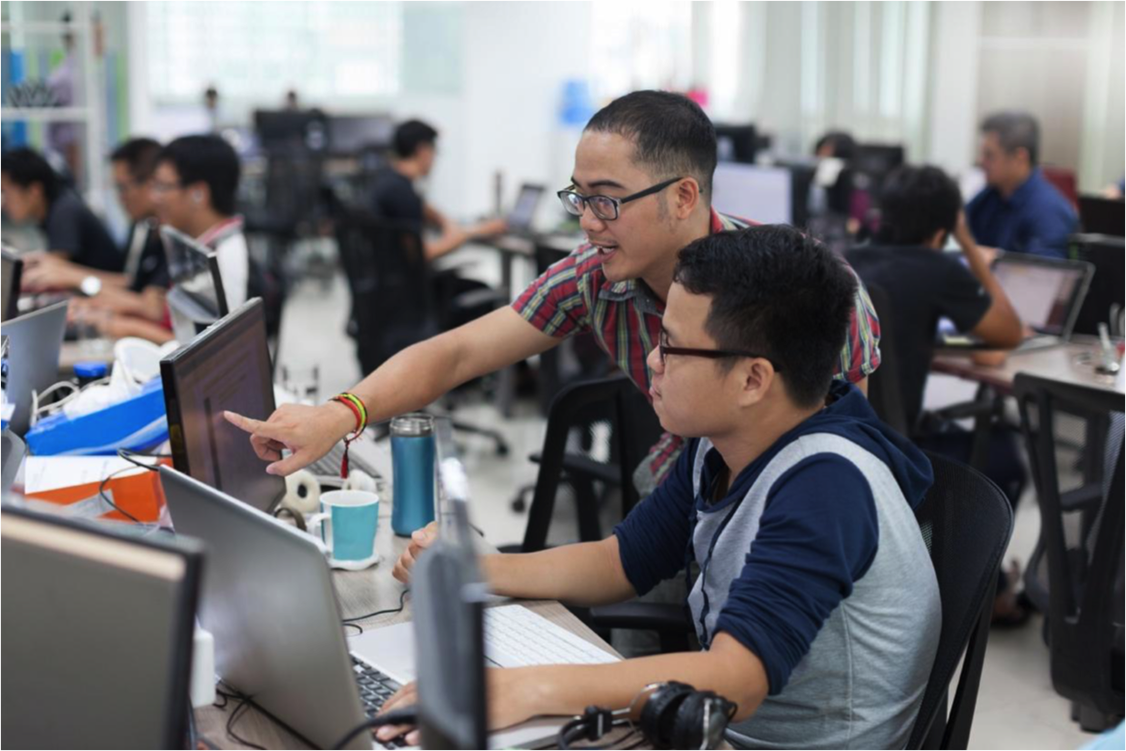
Each of the categories below play a significant role in the Change Management that will take place to meet a corporation’s needs to become, or remain, an “A Player.”
- Changing Workplace demographics – The era of scarcity and the war for talent
- Changing Workplace Culture
- Three Things to Make Your Virtual Workforce a Success
- How to Reinvent Your Corporate Strategy
According to a new survey released by Deloitte, The New Organization: Different by Design, The 2016 Global Human Capital Trends, there are 10 global human capital trends for this decade that rank as follows:
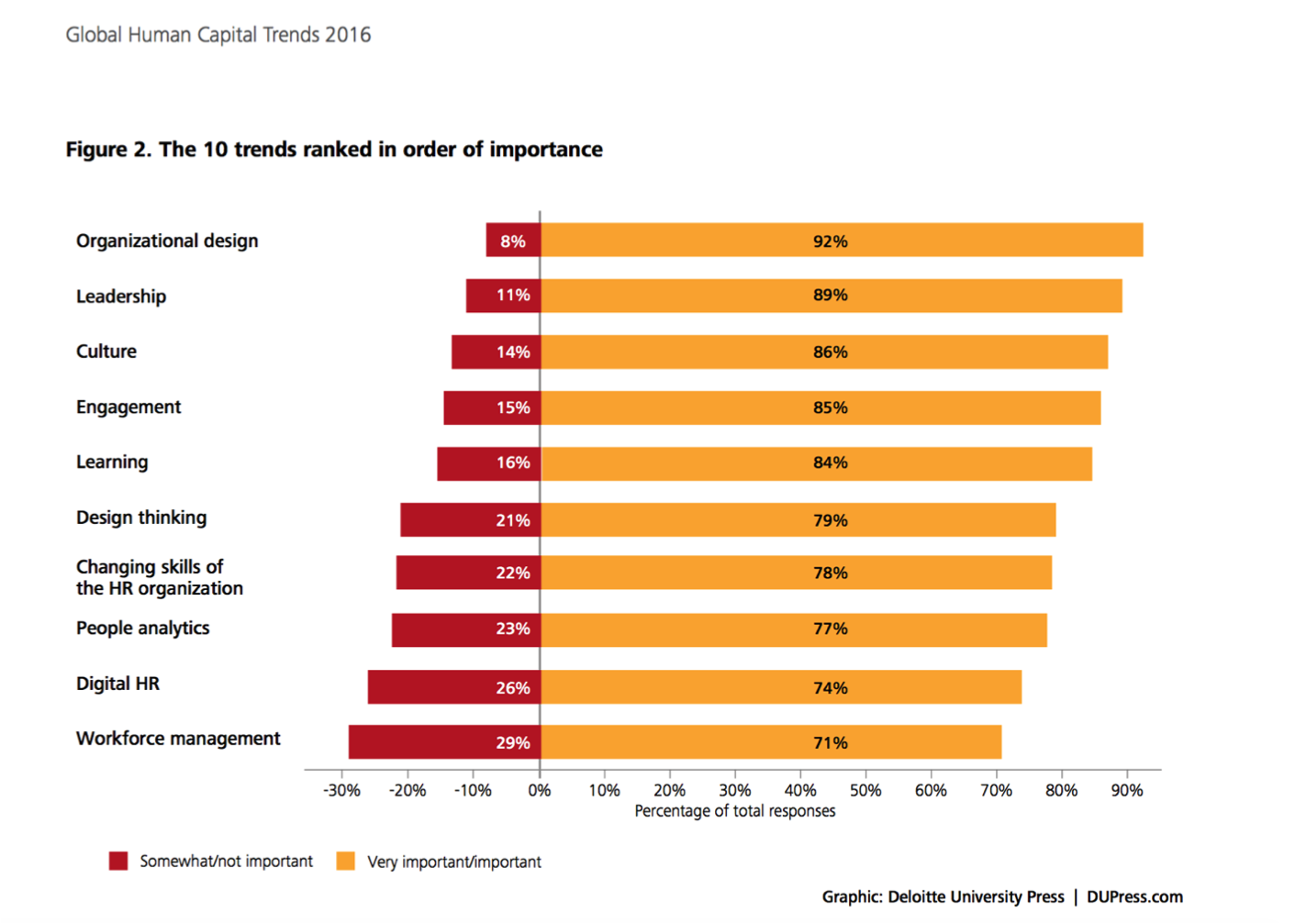
Keeping these 10 trends at the forefront of thought, CEOs and their managers can initiate a Change Management Plan that will help them bridge the gap between where they are and where they need to be to capture the market-share of customers for their industry.
The Workforce of Today and Tomorrow
According to the ManpowerGroup Talent Shortage Survey that was done in 2011, “45% of Asia Pacific employers have difficulty filling job vacancies due to the lack of suitable talent, compared to only 34% globally.” ManpowerGroup Asia has been tracking this trend since 2006 and the 45% job vacancy is the highest percentage of workforce shortage experienced in the Asia Pacific area over the past ten years.
The Chinese workforce is experiencing some of the same trends as in the US. They have an aging workforce with fewer individuals to take the places of those who are leaving. Due mainly to China’s one-child policy, the Chinese workforce was forecasted to grow only 5% between 2011 and 2016. At the end of this year, more than one-third of the Chinese population will be over the age of 50.
In a recent study done by IBM, Addressing the Challenges of an Aging Workforce, a human perspective for firms operating in Asia Pacific, the article addresses the acute problem of low birth rates and aging workers throughout Asia Pacific.
The United Nations DESA (Department of Economic and Social Affairs) in a 2016 report, provides the chart below to show the population makeup of Asia Pacific countries. “Currently, 13 countries and territories, out of 38 with data on different age groups, are experiencing a ‘youth bulge’, where 20 percent or more of the population is between 15 and 24 years old. Another 11 countries and territories are ageing rapidly, where at least 14 percent of the population is 60 years and above. Others are witnessing an expanding share of working-age people. “
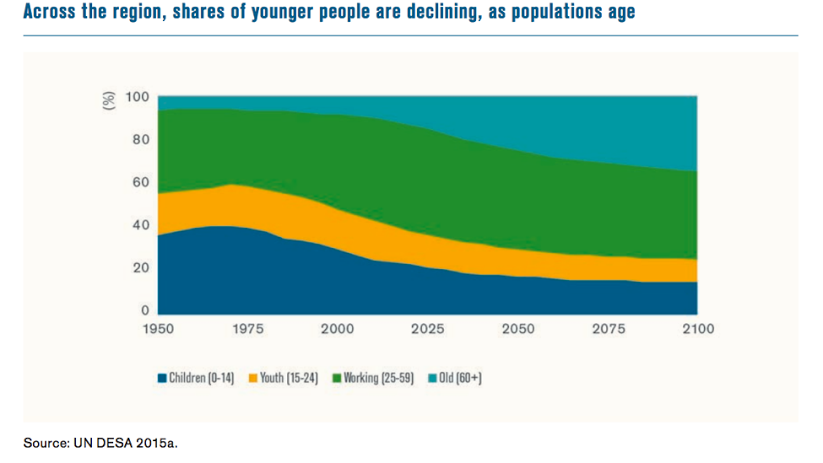
What do the figures in the chart above suggest and how does that affect employers in Asia Pacific? By 2050, “population aging” will be well underway. To add to the issue of the decreasing number of workers, the number of young people entering the workforce will also take a big dip when compared to 1950.
The chart below from ManpowerGroup’s 2015 Talent Shortage survey depicts the difficulty many surrounding countries currently have filing jobs.
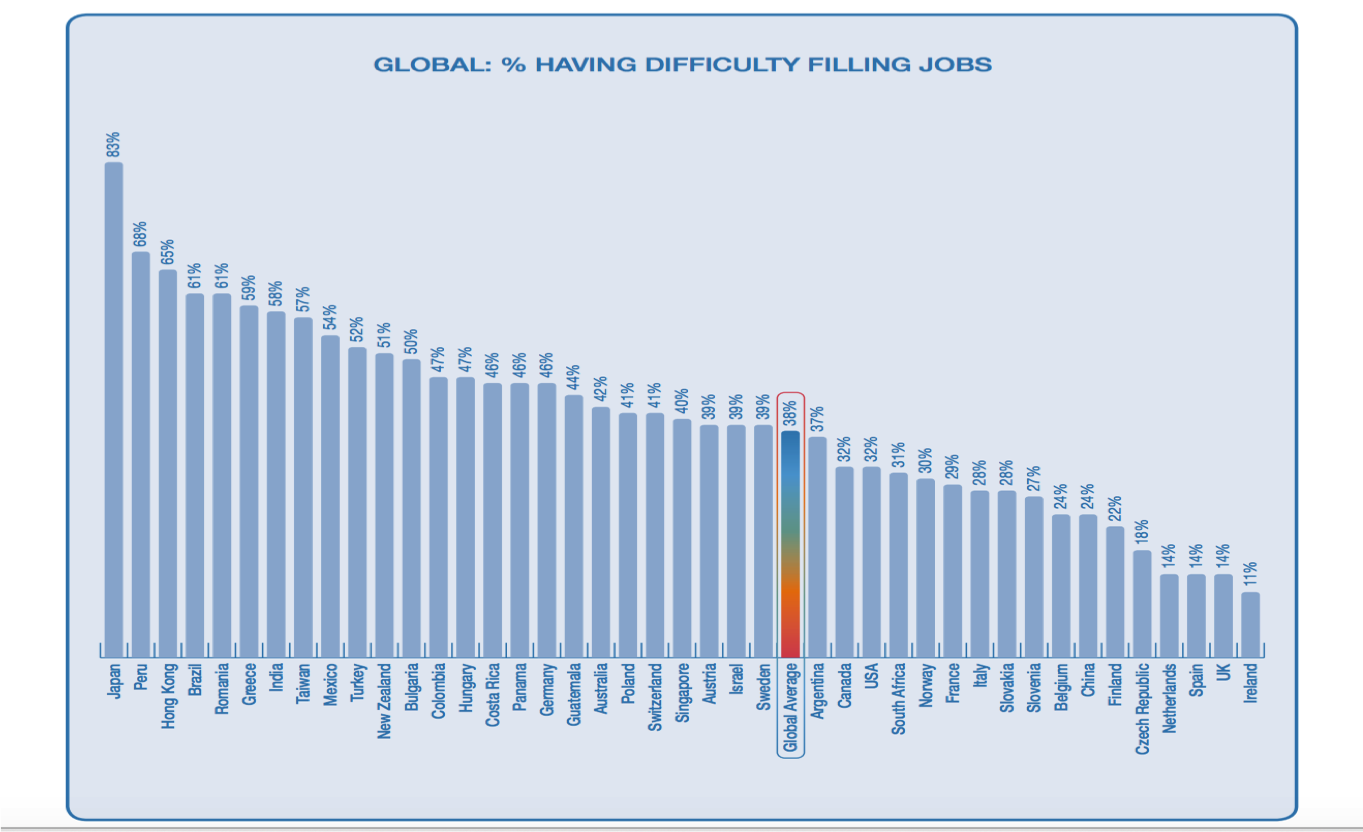
What the data from multiple sources tells us is that skilled resources are already becoming an issue for many countries. As the new generation of workers comes into the workforce, we will see a shift in employee expectations. The generation to follow, the Millennials and the Post Millennials, will need to be well trained and groomed for leadership roles.
Changing The Workplace Culture…………. What should you do?
Rise of the Millennials
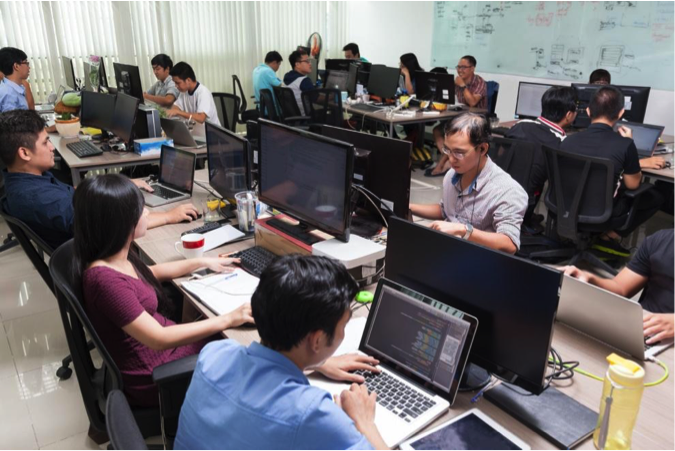
In 2016, Millennials (those born between 1982 and 2004) make up more than half of the global workforce. According to a recent article in TechinAsia, “more than 1.8 billion of the 7 billion people worldwide can be called Millennials.” And, Southeast Asia is home to most of those 1.8 billion.
According to the Global Human Capital Trends Deloitte Study, “they [millennials] bring high expectations for a rewarding, purposeful work experience, constant learning and development opportunities, and dynamic career progress.” No matter where a company is geographically located, Millennials are a buzz in the workplace.
- Millennials are placing a huge emphasis on the use of digital technology. They have grown up in the height of the digital movement. They are ready for “everything technology” the day they enter the workplace.
- They want promotional opportunities – the old term “promote from within” is alive and well with the Millennials.
- Millennials want to know their purpose. This necessitates companies to look at their current mission and vision statements and start sharing the corporate goals with their employees.
- Millennials look for recognition of a job well done. This requires goal setting and performance tied to things that make a difference; the performance that is tied to overall company success.
Leighton Cosseboom, TechinAsia writes, “So what does this mean for Southeast Asian tech people? Startups will need to take social media deadly serious, especially in places like Jakarta, which is now hailed as the Twitter capital of the world.” Companies that utilize millennials in large numbers must get ready for all- things-digital. Workplace communication will take on multiple forms such as social media, interactive software to gather input and feedback on performance, and messaging in virtual workplaces that allow flexibility and constant collaboration.
If measuring performance has not been a high priority on your list, we suggest you move it up near the top. It will become a requirement in your new workplace culture. Although previous generations have valued good performance, it was not always measured, especially when comparing one employee’s performance to another. The new generation of employees will expect to be measured and paid for the value they bring.
So, How is Your Company Measuring Performance?
There have been many articles written about throwing out “the old way of performance management.” I think we’re all in agreement that employees, in general, want to know what is expected of them…how their goals fit into the bigger picture of corporate success…… and how they will be recognized and rewarded for meeting or exceeding performance objectives.
Yes, the old ways of performance management are broken. This new generation, and generations to come, want their performance measured frequently and digitally. They want coaches and mentors to provide frequent and meaningful feedback. And, they want their goals to be aligned with their organisation’s goals. They need to make a difference.
When an organisation can track every contribution back to the larger mission, that’s alignment; and its effect on employee morale and productivity is the common denominator between some of the world’s most successful organizations. Join others are who are taking the steps to meet the coming challenges. Watch for our next blog on how to be a success in supplementing your workplace talent with virtual workers.
Want to find out more? Visit us at webuat.entomo.co or schedule a demo.
Share this article
